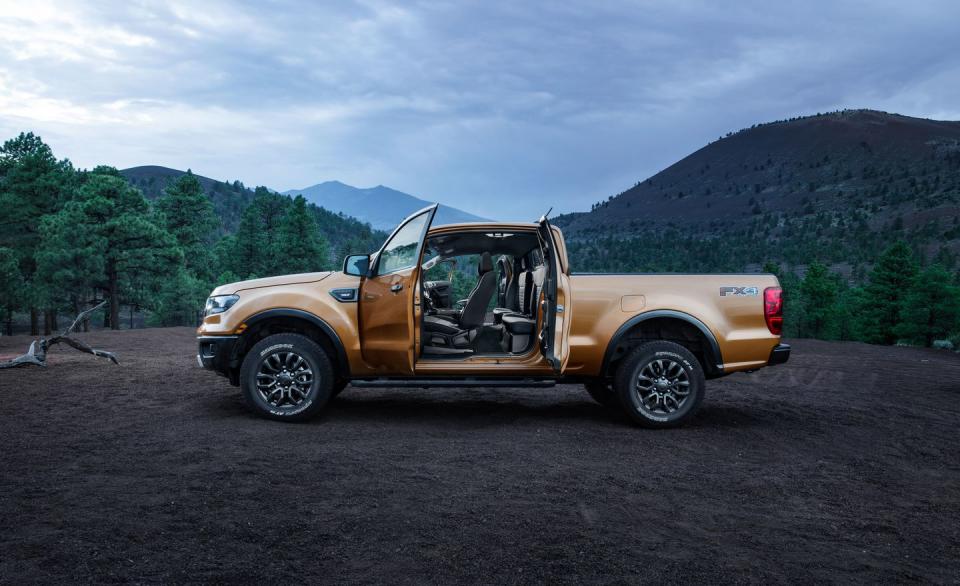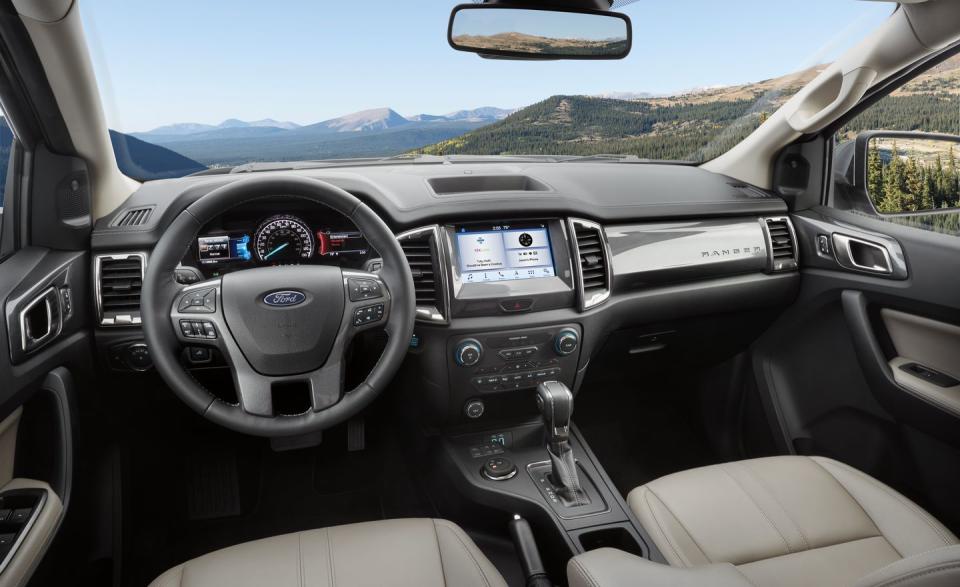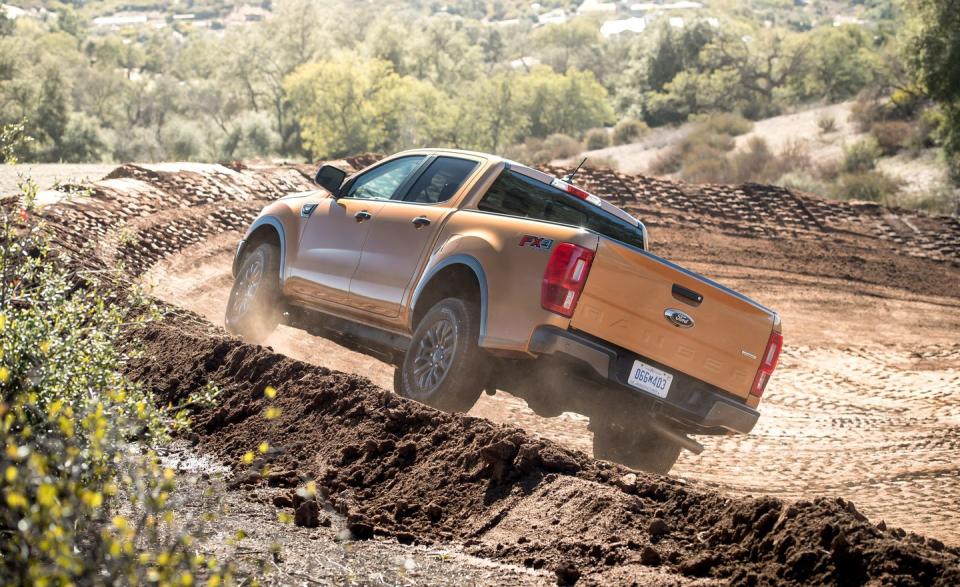The 2019 Ford Ranger Has the Goods to Win in the Mid-Size Segment

Remember that time you left a couple hundred thousand chips on the table and walked away? Wait. Maybe that's not exactly how it went. You walked away, but then the chips started to procreate, and when you checked back in, there were a couple hundred thousand there for the taking?
Ford is hoping that the latter situation is what's going on in the mid-size-pickup class right now, and all signs point to this being an ideal time to relaunch the Ranger. The Chevrolet Colorado and GMC Canyon are on track for about 170,000 combined sales in 2018. Toyota's Tacoma has been selling steadily while the domestics were away and is now riding the class momentum to some 250,000 sales this year, and the Honda Ridgeline is having an okay year by Ridgeline standards (which aren't particularly aspirational), especially now that it looks like a minivan.
Ranger Danger
Ford has been out of the mid-size-truck game in the U.S. since 2011, which incidentally is the same year as the launch of the global Ranger that underpins this new truck and has been sold elsewhere in the world since. But this new North American Ranger has been thoroughly updated and improved for duty here. Think of the global Ranger as the truck a kid makes out of Play-Doh and the U.S.-market Ranger as the result when a professional designer uses his tool kit to style a clay buck. The frame is fortified with mounting locations for solid steel bumpers front and rear, and with the optional towing package, the Ranger is rated to tow up to 7500 pounds or haul 1860 in the bed. That latter figure is every bit as big as the F-150's number. Ford also says it revised its sheetmetal stampings to tighten up panel gaps on American trucks compared to those for overseas markets, although we could see daylight around the tailgate when viewing it in the rearview mirror.
No eye-opening towing figure starts with a wimpy engine. The Ranger takes a different approach than its cross-town rivals, which offer gas four- and six-cylinder engines and a diesel four plus the choice of manual or automatic transmissions. Ford hopes you wanted a turbo four and a 10-speed automatic transmission, because that's the only powertrain it offers. The four displaces 2.3 liters and generates 270 horsepower and 310 lb-ft of torque. Gear ratios remain the same in the Ranger as they are in the F-150, with the only difference being a smaller bellhousing on the Ranger's transmission to accommodate its smaller torque converter.
Those output figures are basically the inverse of the GM twins' 3.6-liter V-6, which makes 308 horsepower and 275 lb-ft. As such, the Ranger's four feels plenty powerful, with the 10-speed swapping through ratios quickly and smoothly. But with seventh being a direct 1.00:1 and three overdrives, acceleration was clearly not the top priority. Ford had some hauling and towing exercises set up for us for this first drive, but another journalist wiped out a fender on the bigger trailer, so all we could sample was the Ranger with a pair of Jet Skis behind it. They presented no challenge.
It's Handsome. Polite, Too
Style is where the mid-size truck market has an edge on the full-size. From the Ridgeline to the butch Tacoma, the spectrum is much broader here. The Ranger toes what many of us consider to be the best line between tough and chic, with the high-riding look of the Taco and the Colorado ZR2 providing a surprisingly handsome home for Ford's hexagonal grille. Inside, lower-trim trucks suffer from uninspired black plastics, but the top trims get upgraded to richer pieces.
It helps that the Ranger rides well. There's a fair bit of dive and squat under braking and acceleration, but that's to be expected with a vehicle lofted so high over its axles. In turns, the body rolls a touch, then takes a set that it maintains without any unsettling wobble. Two-wheel-drive Rangers have 8.4 inches of ground clearance, while the 4x4s gain half an inch, for 8.9. Both configurations offer electronically locking rear differentials, while the front remains open in 4x4s. Four-wheel drive adds about 250 pounds and slightly increased busyness from the front end, but the ride remains civil.
Getting Dirty
Not only does the Ranger offer the usual complement of on-road safety systems-lane-departure warning and assist, blind-spot monitors with trailer coverage, automated emergency braking-but it has a full array of off-road assistants as well. Ford's crawl control uses an electronically controlled hydraulic pump to hammer away at the ABS circuits to maintain speed on off-road downhill runs. And, as is all the rage today, the Ranger gets multiple off-road settings in its Terrain Management system. With a normal setting; one for grass, gravel, and snow; another for mud and ruts; and a sand setting, the system adjusts ABS, stability, and traction-control settings as well as throttle and transmission mapping. And what looks like a skid plate on the FX4 actually is a steel plate. Further building on the confidence that gave us, Ford's people actually call it a "bash plate."
While the powertrain portfolio might be simple, the truck is otherwise available in the same mind-boggling array of configurations as you'd expect. There are XL, XLT, and Lariat trim levels, two- and four-wheel drive, extended-cab and full-crew body styles (SuperCab and SuperCrew, in Ford's confusing lexicon). With rear seatbacks that are fixed to the cab wall, the SuperCab's space is more for stuff than people, but the SuperCrew is surprisingly spacious inside. This six-foot-seven-inch author emerged from a 1.5-hour stint in the back seat feeling perfectly comfortable. That wouldn't work out so well in most other trucks in this class.
Pricing for the SuperCab opens at $25,395 for a rear-driver and $29,555 for a 4x4. Crew-cab trucks start at $27,615 with rear-wheel drive and $31,775 for a 4x4. Load up a four-wheel-drive Lariat, and it'll be possible to surpass $40,000 for a Ranger. But that's par for the class, and nobody in the mid-size-truck class leaves a single dollar or sale on the table anymore.
('You Might Also Like',)

 Yahoo Finance
Yahoo Finance 


